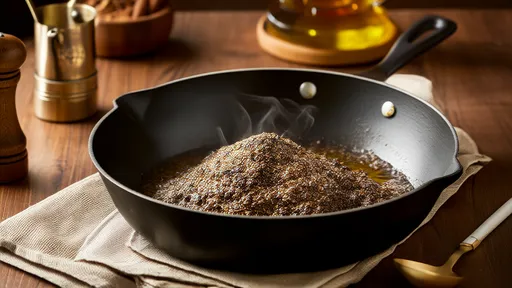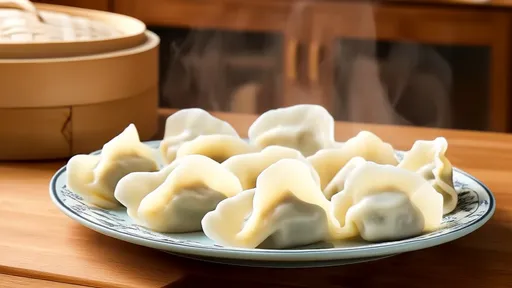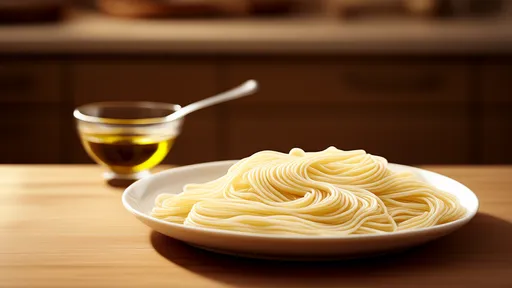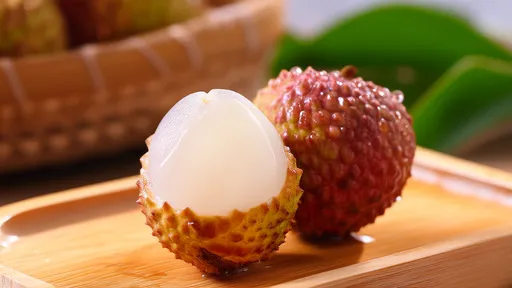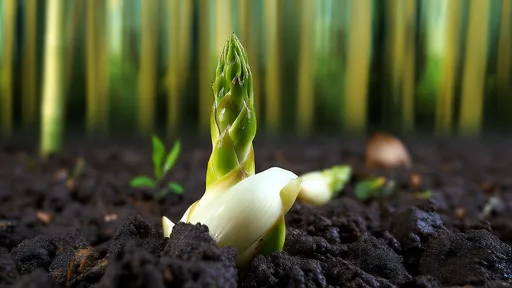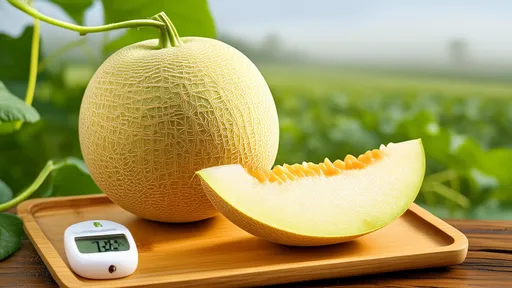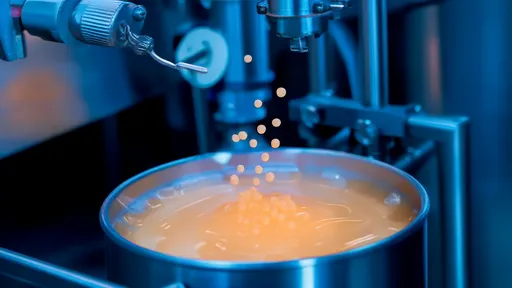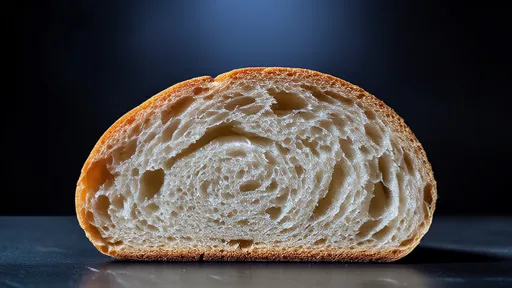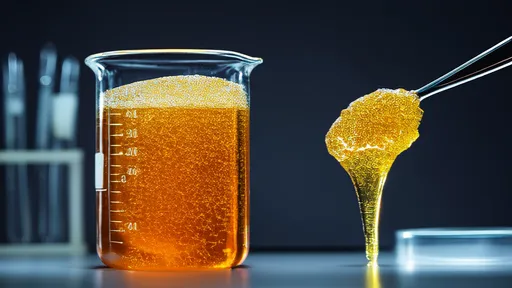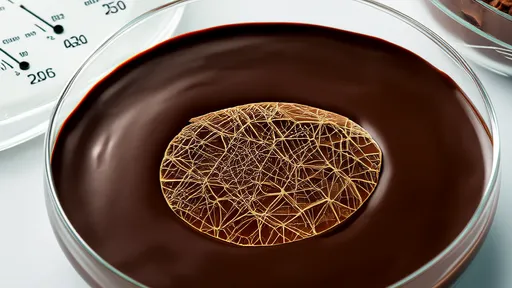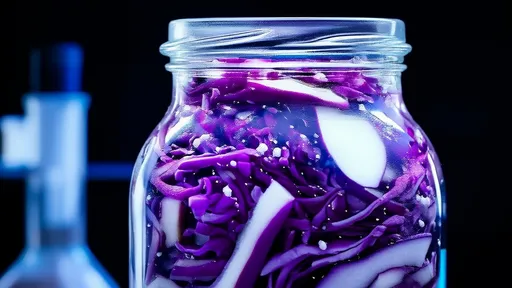For many home cooks and professional chefs, peeling and cutting yams can be an unexpectedly unpleasant experience. The vegetable, known for its nutritional benefits and culinary versatility, has a notorious side effect – it can leave your hands unbearably itchy. This common kitchen woe has led to numerous home remedies and old wives' tales, but one surprising solution has emerged from modern technology: the microwave.
The culprit behind yam-induced itchiness is a natural compound called calcium oxalate, which forms microscopic needle-like crystals that irritate the skin. Traditional methods like wearing gloves or soaking hands in vinegar have been passed down through generations, but they often prove inconvenient or ineffective. The microwave method offers a quick, science-backed alternative that's gaining popularity in culinary circles.
How does it work? When you microwave a yam for about 30 seconds before handling it, the heat disrupts the structure of these irritating compounds. The brief exposure to microwave radiation breaks down the calcium oxalate crystals just enough to prevent them from penetrating your skin, while preserving the yam's texture and nutritional value. This simple pre-treatment can mean the difference between a comfortable cooking experience and hours of frustrating itchiness.
Food scientists explain that the microwave's rapid heating action affects the yam's cellular structure differently than conventional cooking methods. The electromagnetic waves cause water molecules in the yam to vibrate, generating heat from within. This internal heating pattern seems particularly effective at neutralizing the irritants near the vegetable's surface, where they come into contact with your hands during peeling and cutting.
Chefs who regularly work with yams report that the microwave technique has revolutionized their kitchen routines. "I used to dread yam prep days," admits professional cook Marcus Chen. "Now I just pop them in the microwave for half a minute, and I can handle them bare-handed without any issues. It's changed my entire approach to working with this ingredient."
While 30 seconds appears to be the sweet spot for most standard-sized yams, some experimentation might be needed based on your microwave's power and the size of the vegetable. The goal is to warm the yam slightly without actually cooking it. You should be able to handle it comfortably while still maintaining its raw texture for whatever preparation you have planned.
This kitchen hack isn't just about convenience – it has food safety implications too. Many cooks resort to wearing gloves when handling irritating foods, but this can compromise dexterity and tactile sensitivity needed for precise knife work. By neutralizing the irritants at the source, the microwave method allows for safer, more controlled cutting without the barrier of protective gear.
Nutritionists note that this technique preserves more of the yam's health benefits compared to other anti-itch methods. Soaking yams in water or vinegar, for instance, can leach out valuable nutrients. The brief microwave exposure maintains the vegetable's nutritional profile while solving the itch problem. This makes the method particularly appealing to health-conscious cooks who want to maximize the benefits of this vitamin-rich food.
As with any kitchen innovation, there are some precautions to consider. The yam should be whole and unpeeled when microwaved, as cutting it first could lead to uneven heating. Also, while 30 seconds works for most home microwaves, commercial-grade models might require less time. It's always wise to start with shorter intervals and add time if needed.
The microwave method represents an interesting intersection of traditional food knowledge and modern technology. It shows how understanding the science behind common kitchen problems can lead to simple, effective solutions. As more cooks discover this trick, it's quickly becoming standard practice in households and professional kitchens alike.
Beyond its practical applications, this technique highlights an often-overlooked aspect of culinary science – how we interact with food physically, not just gastronomically. The tactile experience of food preparation matters just as much as the final flavor, and innovations that improve this experience can have a significant impact on our relationship with cooking.
For anyone who's avoided cooking with yams because of the unpleasant aftereffects, this microwave trick could open up new culinary possibilities. Dishes that seemed too troublesome to attempt might now become weeknight staples. As food preparation methods continue to evolve, it's satisfying to discover that sometimes the simplest solutions are right there in our kitchens, waiting to be found.
The art of unlocking the full potential of spices lies in a time-honored technique: dry-roasting, crushing, and coaxing out their essential oils. This ancient method, passed down through generations of culinary masters, transforms ordinary spices into aromatic powerhouses that elevate dishes to extraordinary heights. The process may seem simple at first glance, but mastering it requires patience, precision, and an understanding of how heat interacts with different spice varieties.
For many home cooks and professional chefs, peeling and cutting yams can be an unexpectedly unpleasant experience. The vegetable, known for its nutritional benefits and culinary versatility, has a notorious side effect – it can leave your hands unbearably itchy. This common kitchen woe has led to numerous home remedies and old wives' tales, but one surprising solution has emerged from modern technology: the microwave.
The art of making dumplings is a cherished tradition in many cultures, particularly in Chinese cuisine. While the filling often steals the spotlight, the dough wrapper plays an equally crucial role in ensuring the dumplings hold together during cooking. One of the most effective yet underrated techniques for preventing dumpling wrappers from tearing is incorporating egg whites into the dough. This method leverages the science of proteins to create a more resilient and elastic wrapper, capable of withstanding the rigors of boiling or steaming without falling apart.
In kitchens around the world, cooks face a common nemesis when preparing pasta: sticky noodles that clump together into an unappetizing mass. While many swear by the traditional method of rinsing cooked pasta with cold water to prevent sticking, a growing number of culinary experts argue that tossing freshly boiled noodles with olive oil proves far more effective. This technique not only preserves the pasta's ideal texture but also enhances its flavor profile in ways cold water simply cannot match.
Guangdong lychee, a jewel of southern China's fruit basket, has long been celebrated for its succulent flesh and floral aroma. Beyond its irresistible taste, recent research has uncovered a hidden treasure within its vibrant red peel—polyphenols with remarkable antioxidant properties. These compounds are quietly revolutionizing our understanding of how this tropical fruit may contribute to human health far beyond basic nutrition.
The high-altitude coffee farms of Yunnan Province have long been celebrated for producing beans with a distinctive flavor profile. Among the many factors influencing taste, altitude plays a particularly crucial role, especially when it comes to acidity. Unlike the bright, sharp acidity often associated with African coffees, Yunnan’s beans exhibit a more nuanced relationship between elevation and tartness—one that defies simple expectations.
The tender crunch of Zhejiang bamboo shoots has long captivated gourmets and scientists alike, their delicate texture standing as a testament to nature's perfect engineering. While chefs praise their culinary versatility, researchers have uncovered a fascinating cellular secret behind their remarkable freshness – turgor pressure. This biological phenomenon, often overlooked in discussions of vegetable quality, holds the key to understanding why these spring delicacies from China's eastern province maintain their youthful crispness long after harvest.
The Hami melon, a jewel of Xinjiang's agricultural bounty, owes its legendary sweetness to a climatic phenomenon as ancient as the Silk Road itself. Nestled in the arid embrace of China's northwest, this golden-fleshed fruit has thrived for centuries under skies that scorch by day and chill by night. What appears as hardship to most crops becomes the secret alchemy transforming ordinary melons into saccharine masterpieces.
The vast fields of Northeast China, stretching across latitudes from 40°N to 50°N, have long been celebrated as the heartland of soybean production. Among the many factors influencing soybean quality, protein content stands out as a critical metric, not just for nutritional value but also for industrial applications. Recent studies have unveiled a fascinating pattern: the protein content in Northeast soybeans exhibits significant variation along latitudinal gradients. This discovery has sparked renewed interest in understanding how geography shapes the very fabric of this agricultural staple.
The process of homogenization in ice cream mix preparation plays a pivotal role in achieving the desired texture, stability, and mouthfeel of the final product. At the heart of this process lies the principle of fat emulsification, where milk fat globules are broken down into smaller, more uniform particles. This not only enhances the emulsion's stability but also ensures a smoother consistency in the ice cream. The science behind homogenization parameters is both intricate and fascinating, as it directly influences the quality of the end product.
The phenomenon of bread staling has puzzled bakers and food scientists for generations. While most consumers associate staleness with dryness, the underlying mechanisms involve complex interactions between starch retrogradation and water migration within the bread matrix. This intricate dance between moisture and crystalline structures ultimately determines whether your morning toast will delight or disappoint.
The formation of rock sugar crystals is a fascinating interplay of chemistry and physics, where the delicate balance of supersaturation dictates the birth and growth of crystalline structures. At its core, this process hinges on the creation of nucleation sites—tiny clusters of molecules that serve as the foundation for larger crystals. The journey from syrup to shimmering rock sugar is anything but straightforward, and understanding the factors that influence nucleation can unlock greater control over crystal size, clarity, and yield.
The art of chocolate tempering is a delicate dance of temperature control, one that hinges on the precise crystallization of cocoa butter. This process is not merely a technical step in chocolate production; it is the very heart of what gives chocolate its signature snap, glossy sheen, and melt-in-the-mouth texture. Without proper tempering, chocolate can appear dull, develop a grainy texture, or fail to release cleanly from molds. The secret lies in understanding how cocoa butter behaves under varying thermal conditions.
The science behind pickling vegetables has fascinated food chemists and home cooks alike for centuries. While the process may seem straightforward – submerging vegetables in brine – the molecular dance occurring within each cell reveals a complex interplay of chemistry and physics. Recent advances in sodium ion detection techniques have allowed researchers to map the distribution of salt throughout pickled vegetables with unprecedented precision, shedding new light on this ancient preservation method.
The phenomenon of "wine legs" or "tears of wine" has captivated drinkers and scientists alike for centuries. When a glass of wine or spirit is swirled, droplets form on the inside of the glass, creating mesmerizing streaks that slowly trickle back down. This elegant display isn’t just a sign of a good drink—it’s a fascinating interplay of fluid dynamics, surface tension, and evaporation.
